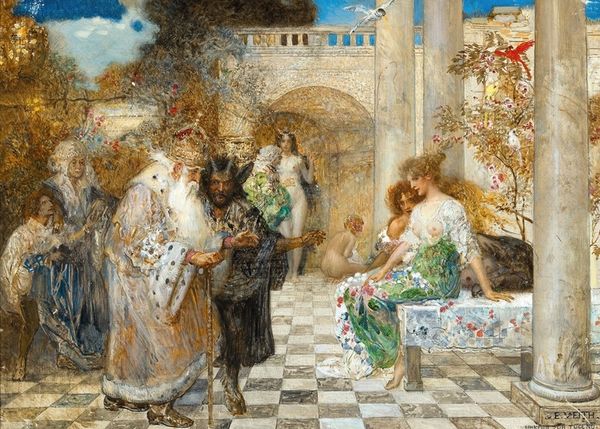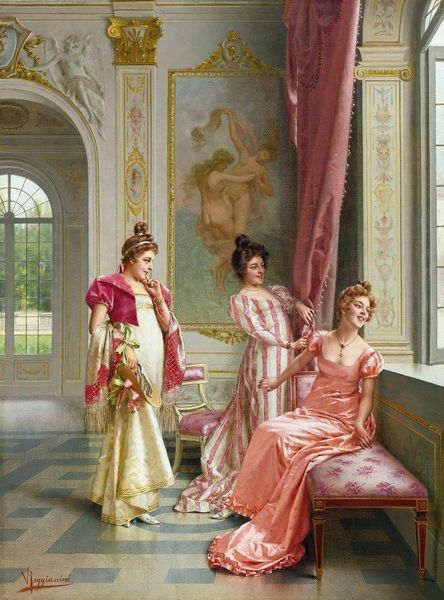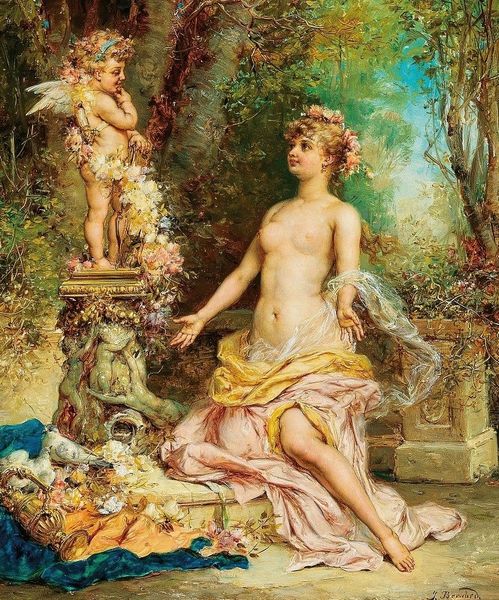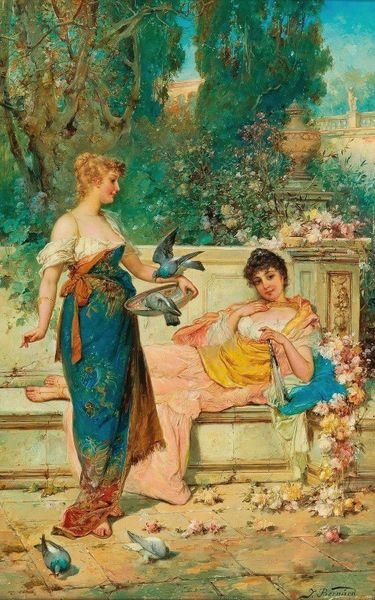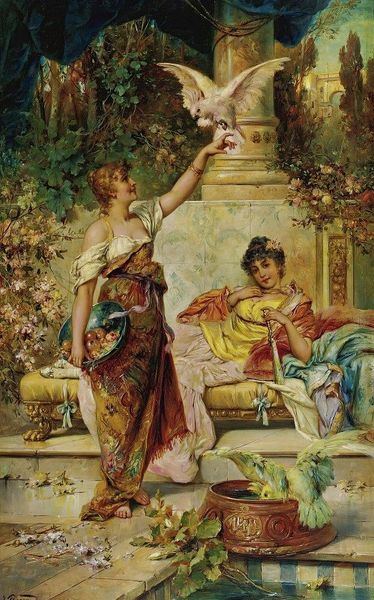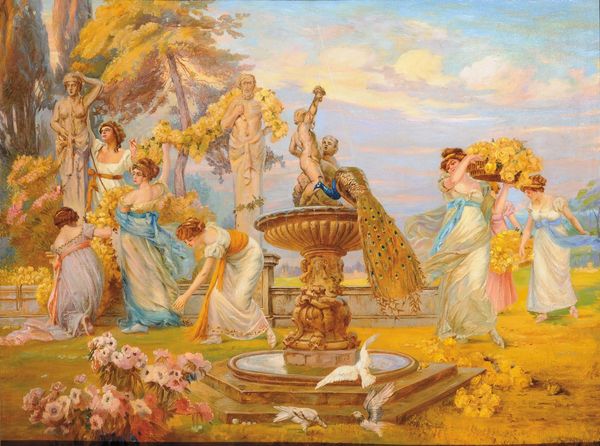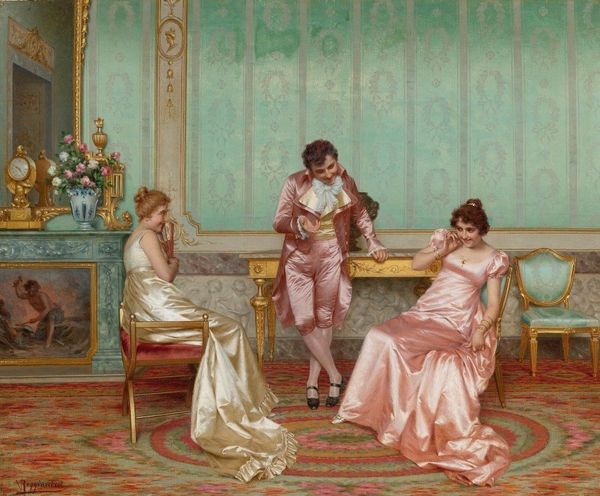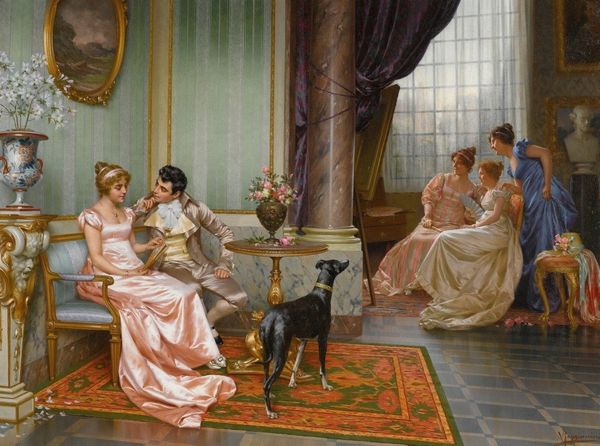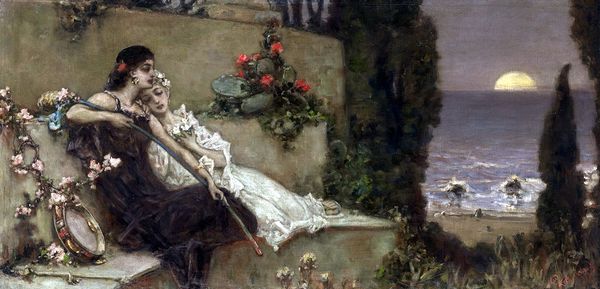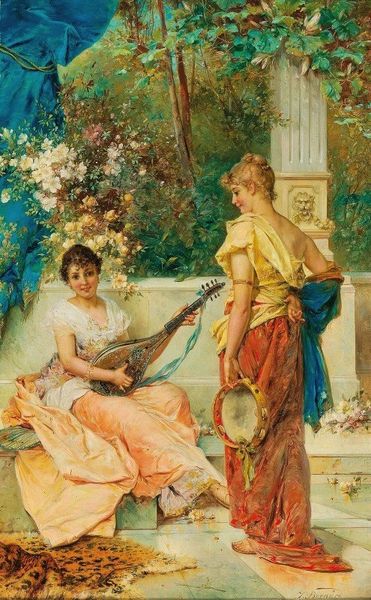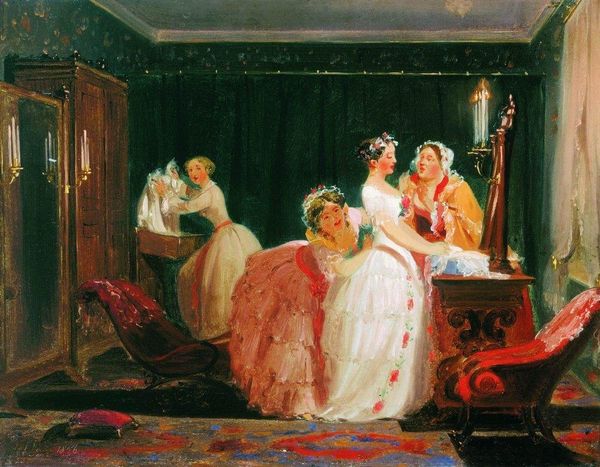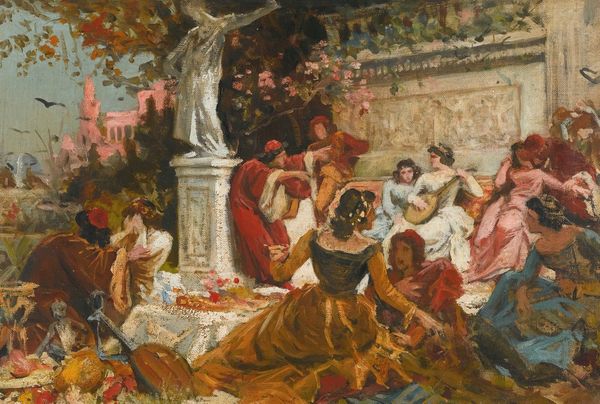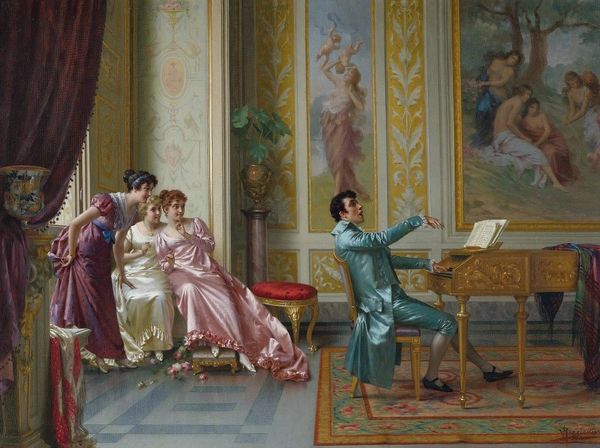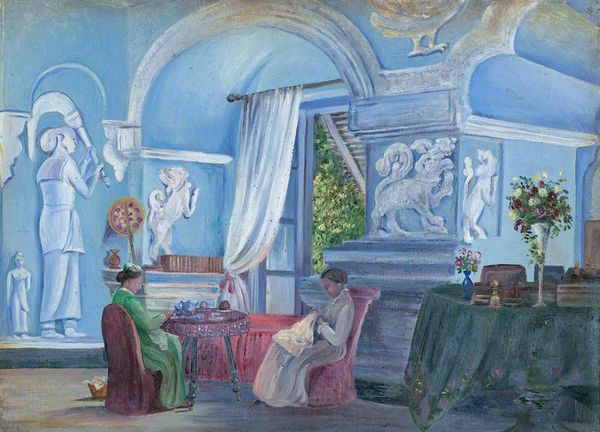
Copyright: Public domain
Luc-Olivier Merson captured this scene, featuring Miss Clermont and Count Melun, in a whimsical pavillion. Above the sitters we see a deity that seems to be an allegorical representation of either love or vanity, holding a mirror and a scepter. Mirrors, from ancient myths to Renaissance art, have long symbolized not just reflection, but also self-awareness and the passage of time. Think of Narcissus, captivated by his own image, or the vanitas paintings where mirrors remind us of life’s fleeting nature. Here, the mirror reflects the fleeting beauty and social performances of the sitters below. This divine figure seems to be looking at her own reflection, and is a symbol of hubris and arrogance that resonates deeply within the collective psyche. The scepter, often associated with power and authority, suggests a regal or commanding presence, adding layers of meaning to the characters and the overall composition. Together, these symbols evoke a complex interplay of themes—beauty, power, and the inevitable passage of time—resonating through the ages in art and culture.
Comments
No comments
Be the first to comment and join the conversation on the ultimate creative platform.
